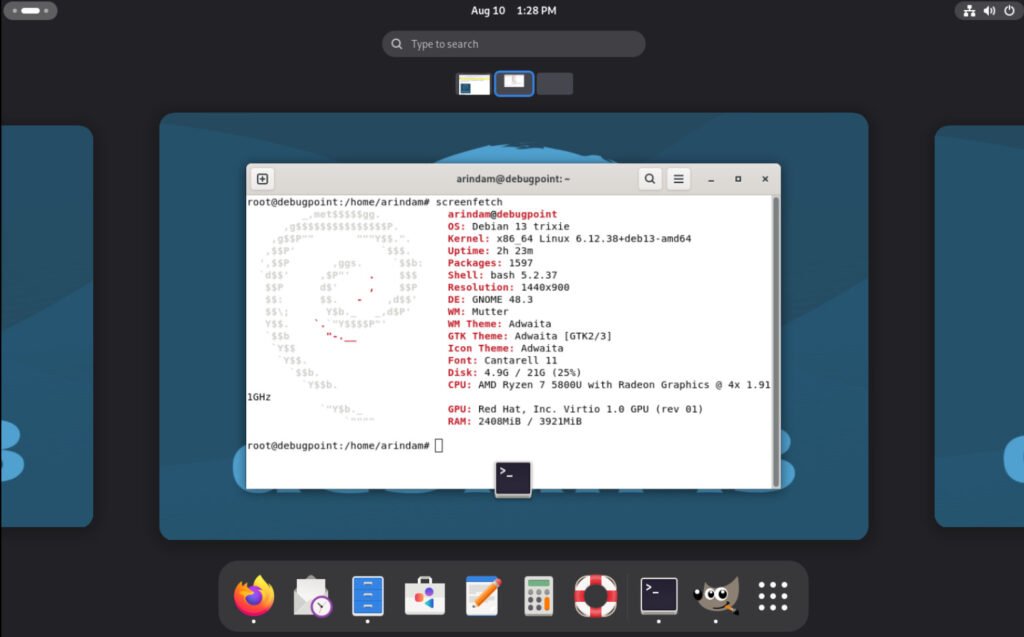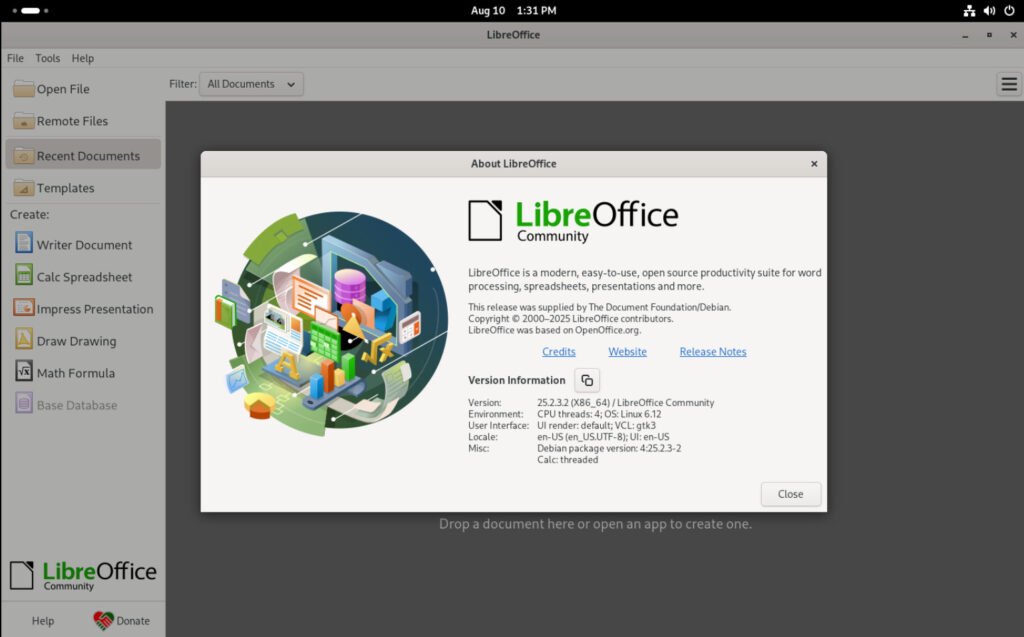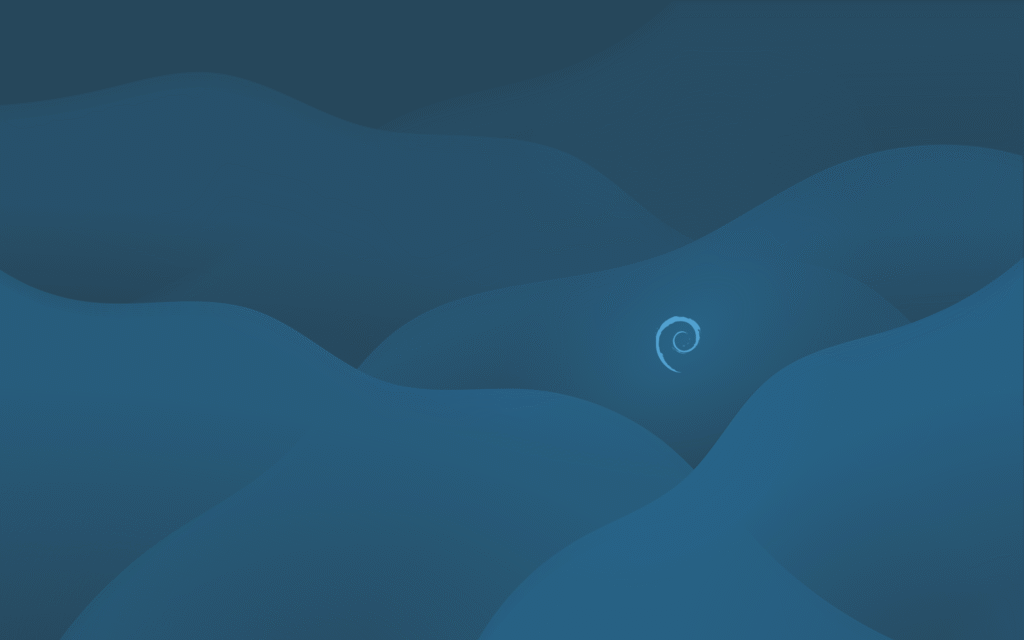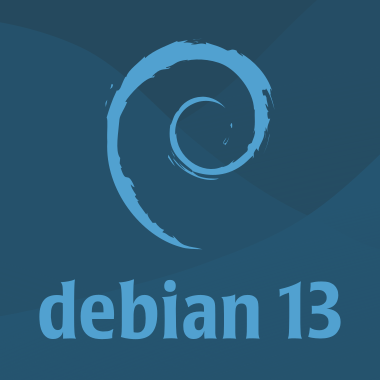A roundup of the key features of the latest Debian 13 release.
After almost two years of development, Debian 13 “Trixie” is now available to download and upgrade from Debian 12. This critical release brings few major updates including latest packages across modules, Linux Kernel 6.12 LTS, modern desktop environments and more.
Trixie will be supported until 2030. Since Debian, “the universal operating system”, powers many downstream distributions, servers – it is indeed a major milestone release.
Let’s have a look at the new features.
Table of Contents
Debian 13: New Features
Hardware architecture supports
There are few core architecture support changes arrives in the Debian 13. For the first time officially, the RISC-V architecture support is introduced (code name riscv64 for installers).
However, the support for i386 is now limited due to lack of support/packages. Also, the support for ARM EABI (armel) is dropped.
That brings, the current supported architectures are follows for Debian 13:
- 64-bit PC (amd64)
- 64-bit ARM (arm64)
- ARM EABI (armel)
- ARMv7 (EABI hard-float ABI, armhf)
- 64-bit little-endian PowerPC (ppc64el)
- 64-bit little-endian RISC-V (riscv64)
- IBM System z (s390x)
Kernel 6.12 LTS
At the core, Debian 13 powered by Linux kernel 6.12, an LTS (Long-Term Support) release, which brings several key improvements and features. Kernel 6.12 includes real-time support (PREEMPT_RT) for enhanced responsiveness, a new sched_ext scheduler for eBPF-based task scheduling, and the ability to display DRM panic messages as QR codes for easier debugging.
Other notable additions include improved hardware support, particularly for Intel and AMD processors, and new features for networking, storage, and security.
Desktop environments
For those uses Debian on desktop, there are significant updates arrives in KDE Plasma and other popular desktop environments.
Its default desktop offerings, GNOME arrives with its version 48. In addition, Xfce 4.20, LXQt 2.1.0, LXDE 13 are the additional version of their respective releases.
For the first time, Debian releases with KDE Plasma 6. This is significant since it is based on latest Qt 6 and KDE Framework 6. A lot of work went into these upgrades.
Key KDE versions:
- Qt 6.8.2 (up from 6.4.2)
- KDE Frameworks 6.13 (new)
- Plasma 6.3.6 (replaces Plasma 5.27.5)
It’s worth pointing out that Debian 12 featured KDE Plasma 5.x versions.
HTTP boot supports
The Debian Installer and Debian Live Images can now be booted using “HTTP Boot” on supported UEFI and U-Boot firmware. On systems using TianoCore firmware including VMs, enter the Device Manager menu, then choose Network Device List, select the network interface, HTTP Boot Configuration, and specify the full URL to the Debian ISO to boot.
Web engine updates
Both the curl CLI and libcurl now have support for HTTP/3. HTTP/3 requests can be made with the flags –http3 or –http3-only. The curl package now ships wcurl, a wget alternative that uses curl to perform downloads.
Trixie ships .bdic binary dictionaries compiled from Hunspell source for the first time in Debian. The .bdic format was developed by Google for use in Chromium. It can be used by Qt WebEngine, which is derived from Chromium’s source. Web browsers based on Qt WebEngine can take advantage of the provided .bdic dictionaries if they have appropriate upstream support.
Key package versions and updates
Debian 13 Trixie introduces a massive list of new packages and refreshes around 63% of the Debian 12 “bookworm” packages. Total package count in this release stands at, 69830 which includes 11416 new packages.
However, around, 8844 (12%) of the packages are dropped and marked as obsolete since Debian 12.
Here’s a brief list of key packages and their versions in Debian 13:
- Apache 2.4.64
- Bash 5.2.37
- BIND DNS Server 9.20
- Cryptsetup 2.7
- curl/libcurl 8.14.1
- Emacs 30.1
- LibreOffice 25
- Exim (default email server) 4.98
- GCC, the GNU Compiler Collection (default compiler) 14.2
- GIMP 3.0.4
- GnuPG 2.4.7
- Inkscape 1.4
- the GNU C library 2.41
- Linux kernel 6.12 series
- LLVM/Clang toolchain 19 (default), 17 and 18 available
- MariaDB 11.8
- Nginx 1.26
- OpenJDK 21
- OpenLDAP 2.6.10
- OpenSSH 10.0p1
- OpenSSL 3.5
- Perl 5.40
- PHP 8.4
- Postfix 3.10
- PostgreSQL 17
- Python 3 3.13
- Rustc 1.85
- Samba 4.22
- Systemd 257
- Vim 9.1
Wallpaper
Every major Debian release comes with latest wallpaper set. It includes the banners, main theme and large wallpapers. Here are the snippets for this release, code name “Ceratopsian”:
Download
If you are running Debian 12 bookworm, you can open the /etc/apt/sources.list via any text editor and add the following lines. Make sure to verify the mirror URL and change the following command. Also replace all the bookworm lines with trixie.
deb http://deb.debian.org/debian/ trixie main
deb-src http://deb.debian.org/debian/ trixie main
deb http://security.debian.org/debian-security trixie-security main
deb-src http://security.debian.org/debian-security trixie-security main
deb http://deb.debian.org/debian/ trixie-updates main
deb-src http://deb.debian.org/debian/ trixie-updates main
If you want to add non-free packages, see the next section.
After adding those, refresh the apt cache:
sudo apt update
And then, run the following to get the update.
sudo apt dist-upgrade
For fresh ISO download, visit any of the below links.
Non-Free Firmware
If you need specific non-free firmware, add the following lines in /etc/apt/sources.list file. Then run the system update, or use apt to install specific packages.
deb http://deb.debian.org/debian trixie main contrib non-free non-free-firmware
deb-src http://deb.debian.org/debian trixie main contrib non-free non-free-firmware
deb http://deb.debian.org/debian-security trixie-security main contrib non-free non-free-firmware
deb-src http://deb.debian.org/debian-security trixie-security main contrib non-free non-free-firmware
deb http://deb.debian.org/debian trixie-updates main contrib non-free non-free-firmware
deb-src http://deb.debian.org/debian trixie-updates main contrib non-free non-free-firmware
Stay tuned for our detailed upgrade guide in this week.
Wrapping Up
Overall, it’s a great release, refreshing packages and bringing additional new updates. Keeping with the trends, Debian also dropped few obsolete architectures and packages, to keep it as clean as possible.
Debian Trixie can be the best alternative to Ubuntu or other distributions at this point, with all the major desktops are now available. You can keep running Debian 13 without any major outage for at least 5 years from now.



